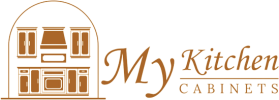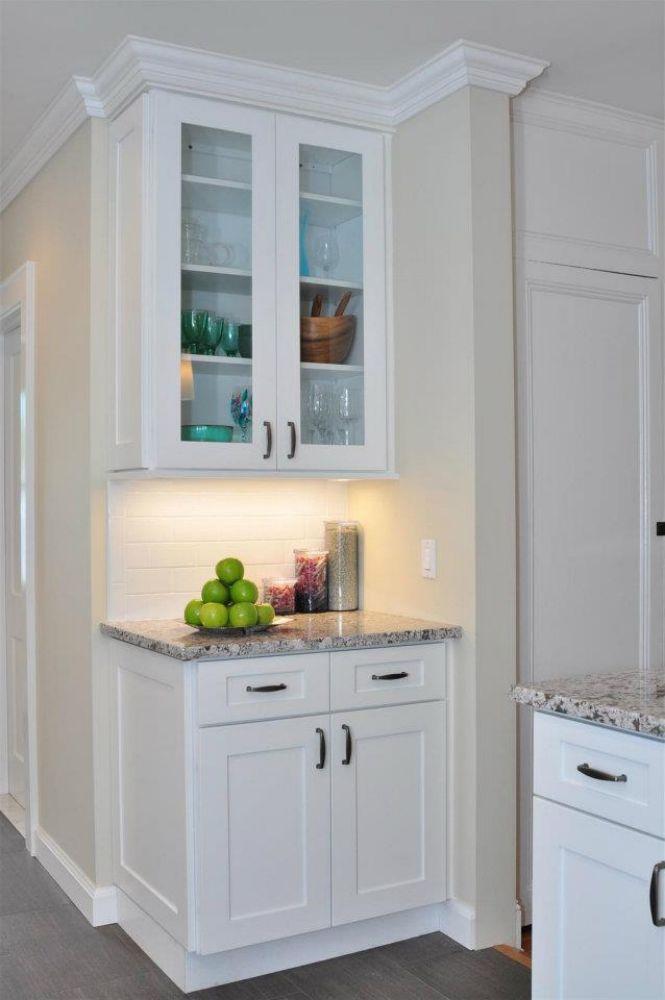Understanding the Importance of the Best Materials for Low VOC Cabinets
Indoor air quality is one of the most critical aspects of a healthy home environment, especially in spaces like kitchens where cabinetry occupies a large area. Cabinets made from traditional materials often emit volatile organic compounds (VOCs), which can negatively impact health by releasing chemicals into the air. These compounds contribute to indoor pollution, leading to respiratory irritation, allergies, and other long-term issues. Choosing eco-conscious products is vital, and that’s where understanding the best materials for low VOC cabinets becomes essential for homeowners and builders alike.
When you’re exploring options such as Best materials for low VOC cabinets, it’s important to recognize how construction materials, adhesives, and finishes all play a role in the air quality and sustainability of your living space. By selecting high-quality, low-emission materials, you create a safer and more environmentally responsible kitchen or bathroom.
What Makes Cabinets Low VOC
Cabinets are considered low VOC when they are manufactured using materials, adhesives, and finishes that emit minimal volatile organic compounds. These compounds typically come from glues, lacquers, paints, and composite woods. To qualify as low VOC, cabinets must meet stringent emission standards set by organizations like GREENGUARD Gold, CARB Phase 2 (California Air Resources Board), and EPA TSCA Title VI.
Low VOC cabinets don’t just benefit individuals with sensitivities—they enhance the health of everyone in the household. Over time, these cabinets contribute to cleaner indoor air, reduced odor, and a lower carbon footprint, aligning with modern eco-friendly design goals.
Solid Wood: A Natural and Low VOC Choice
Solid wood remains one of the best materials for low VOC cabinets because it’s naturally free from harmful synthetic chemicals. Unlike particleboard or MDF, solid wood does not require adhesives containing formaldehyde. Woods like maple, oak, birch, hickory, and cherry are popular choices for durable, low-emission cabinetry.
When paired with water-based or UV-cured finishes, solid wood cabinets maintain their natural beauty while ensuring minimal impact on air quality. They are also long-lasting and can be refinished or repainted, reducing waste and the need for replacements. Homeowners seeking authenticity and longevity will find that solid wood provides both environmental and aesthetic advantages.
Plywood: A Sustainable Alternative for Low VOC Cabinets
High-quality plywood is another excellent material option for low VOC cabinetry. Unlike traditional particleboard, which can emit high levels of VOCs due to the adhesives used, modern plywood designed for eco-friendly construction employs soy-based or formaldehyde-free glues. This makes it a safer and more sustainable alternative for those concerned about indoor air quality.
The layered structure of plywood provides strength and stability while maintaining a lower weight than solid wood. When finished with low-emission sealants, plywood cabinetry offers exceptional durability, making it ideal for both kitchen and bathroom installations.
MDF (Medium-Density Fiberboard) with Low VOC Formulations
While MDF has historically been associated with high VOC emissions, advancements in technology have led to the development of low-VOC and formaldehyde-free MDF products. These newer formulations use water-based adhesives or alternative binding agents such as methylene diphenyl diisocyanate (MDI) that do not release harmful gases.
MDF remains a popular choice for painted cabinets due to its smooth surface and affordability. When properly sealed and finished with non-toxic paints, it can perform comparably to natural wood in terms of strength and design flexibility. Homeowners looking for a balance between budget and environmental responsibility can rely on low-VOC MDF options for stylish and safe cabinetry.
Bamboo: The Eco-Friendly Powerhouse
Bamboo is gaining recognition as one of the most sustainable and low-emission materials for cabinetry. Technically a grass, bamboo grows rapidly and regenerates without the need for replanting, making it an eco-conscious alternative to hardwoods.
When engineered using low-VOC adhesives and finishes, bamboo cabinetry becomes one of the best materials for low VOC cabinets. It’s durable, moisture-resistant, and visually distinctive. Many modern designs feature bamboo’s clean lines and natural grain, making it ideal for contemporary or eco-modern kitchens.
Bamboo also offers excellent dimensional stability, meaning it’s less prone to warping or swelling—an added advantage in humid environments such as kitchens and bathrooms.
Formaldehyde-Free Particleboard: A Safer Composite Option
Traditional particleboard often contains urea-formaldehyde resins, which release VOCs over time. However, new versions of particleboard now use formaldehyde-free adhesives, significantly reducing emissions. These boards are often made from recycled wood fibers and plant-based glues, combining sustainability with affordability.
Although particleboard isn’t as durable as solid wood or plywood, it can be a viable option for homeowners seeking eco-friendly cabinets at a lower cost. When finished with water-based or UV-cured coatings, it becomes an excellent low-emission solution for less demanding applications like office cabinets or laundry room storage.
Stainless Steel: A Non-Porous, VOC-Free Option
For those seeking an entirely chemical-free cabinetry option, stainless steel stands out. It is inherently VOC-free since it contains no organic compounds that can off-gas. Stainless steel cabinets are highly durable, non-porous, and resistant to moisture, mold, and bacteria—making them perfect for allergy sufferers and health-conscious homeowners.
While stainless steel has a higher upfront cost, it offers unmatched longevity and hygiene benefits. Its sleek, industrial appearance fits perfectly in modern kitchens and professional settings. For ultimate air quality and sustainability, stainless steel is a material worth considering.
Glass and Aluminum Accents for Low VOC Design
Complementing wooden cabinetry with glass or aluminum accents can enhance design while maintaining low VOC standards. Glass is an inert material that does not emit harmful chemicals, while aluminum provides lightweight strength and resistance to corrosion.
Incorporating these materials not only diversifies the aesthetic appeal but also reduces the overall VOC load in your home. For example, glass-front cabinet doors combined with bamboo or low-VOC plywood frames offer both elegance and safety.
The Role of Adhesives and Sealants in VOC Emissions
Even the best materials for low VOC cabinets can lose their effectiveness if bonded or sealed with high-VOC adhesives. The type of glue used in construction plays a significant role in determining air quality.
To ensure safety, opt for cabinets that use water-based, soy-based, or bio-resin adhesives instead of urea-formaldehyde glues. These alternatives perform just as effectively while emitting fewer toxic compounds. Additionally, using low-VOC or zero-VOC sealants and stains further enhances the health profile of your cabinetry.
Low-VOC Finishes and Coatings for Safe Cabinets
Finishes protect cabinetry surfaces from moisture and wear, but they’re also a potential source of chemical emissions. Traditional oil-based varnishes release VOCs during application and curing. In contrast, water-based polyurethane and UV-cured finishes provide excellent protection with minimal emissions.
GREENGUARD Gold and similar certifications ensure that these finishes meet strict safety standards. When paired with low-VOC materials, they create an ideal combination for households aiming to improve indoor air quality.
The Significance of GREENGUARD Gold Certification
Cabinets certified by GREENGUARD Gold have been tested to meet some of the world’s most rigorous chemical emission standards. This certification ensures that the materials used release minimal pollutants, making them safe for environments such as schools, healthcare facilities, and residential spaces.
For homeowners, choosing cabinets with this certification guarantees that both materials and finishes contribute to a healthier home. Whether made of solid wood, plywood, or bamboo, GREENGUARD Gold-certified cabinets set the benchmark for air quality and sustainability.
Moisture Control and Mold Resistance in Low VOC Cabinets
Maintaining moisture control is essential to prevent mold growth—a major concern for allergy sufferers. Materials like treated plywood, stainless steel, and bamboo offer inherent resistance to moisture. Proper sealing and ventilation further reduce the risk of mold and mildew.
When selecting low VOC cabinets, prioritize moisture-resistant materials and finishes. This combination ensures longevity while safeguarding air quality by preventing organic growth in hidden cabinet areas.
The Environmental Benefits of Low VOC Cabinet Materials
Beyond personal health benefits, using the best materials for low VOC cabinets also supports global environmental sustainability. By choosing renewable, recyclable, and non-toxic materials, you contribute to reduced deforestation, lower greenhouse gas emissions, and responsible resource use.
For instance, bamboo’s rapid renewability and stainless steel’s recyclability help reduce ecological impact. Likewise, choosing manufacturers that adhere to responsible forestry and chemical safety standards ensures that your purchase promotes a sustainable production cycle.
Proper Installation for Low VOC Cabinets
The way your cabinets are installed can also affect indoor air quality. During installation, cutting and sanding can release fine dust particles, so it’s best to work with professionals who use dust containment and ventilation systems. After installation, allowing the area to air out for several days helps any residual odors or emissions dissipate before regular use.
Additionally, sealing gaps between cabinets and walls prevents dust and allergens from accumulating, enhancing cleanliness and overall air quality.
Longevity and Maintenance of Low VOC Cabinets
One of the greatest advantages of low VOC materials is their durability. Solid wood, bamboo, and stainless steel cabinets can last decades with minimal maintenance. Regular cleaning using mild, non-toxic products keeps surfaces safe without introducing harsh chemicals back into the air.
Refinishing wood cabinets with low-VOC stains or repainting with water-based paints extends their life while maintaining indoor safety standards. This sustainable approach also minimizes waste and reduces environmental strain.
Combining Aesthetic Appeal with Health Conscious Design
Eco-friendly doesn’t mean sacrificing style. Modern manufacturing allows for a wide range of low-VOC cabinet designs that complement any home décor—from rustic to ultra-modern. Bamboo’s natural texture, solid wood’s timeless appeal, and the sleekness of stainless steel offer both visual and health benefits.
Designing a kitchen or bathroom with air quality in mind ensures that beauty and wellness coexist harmoniously.
Conclusion
Selecting the best materials for low VOC cabinets is an essential step toward creating a healthier and more sustainable home. From solid wood and bamboo to formaldehyde-free plywood and stainless steel, each option offers unique advantages in minimizing harmful emissions. Complementing these materials with eco-friendly adhesives, water-based finishes, and responsible installation practices ensures lasting benefits for both your health and the environment.
Investing in low-VOC cabinetry means investing in better air quality, long-term durability, and overall well-being. By making informed choices today, you pave the way for a cleaner, safer, and more sustainable tomorrow.

